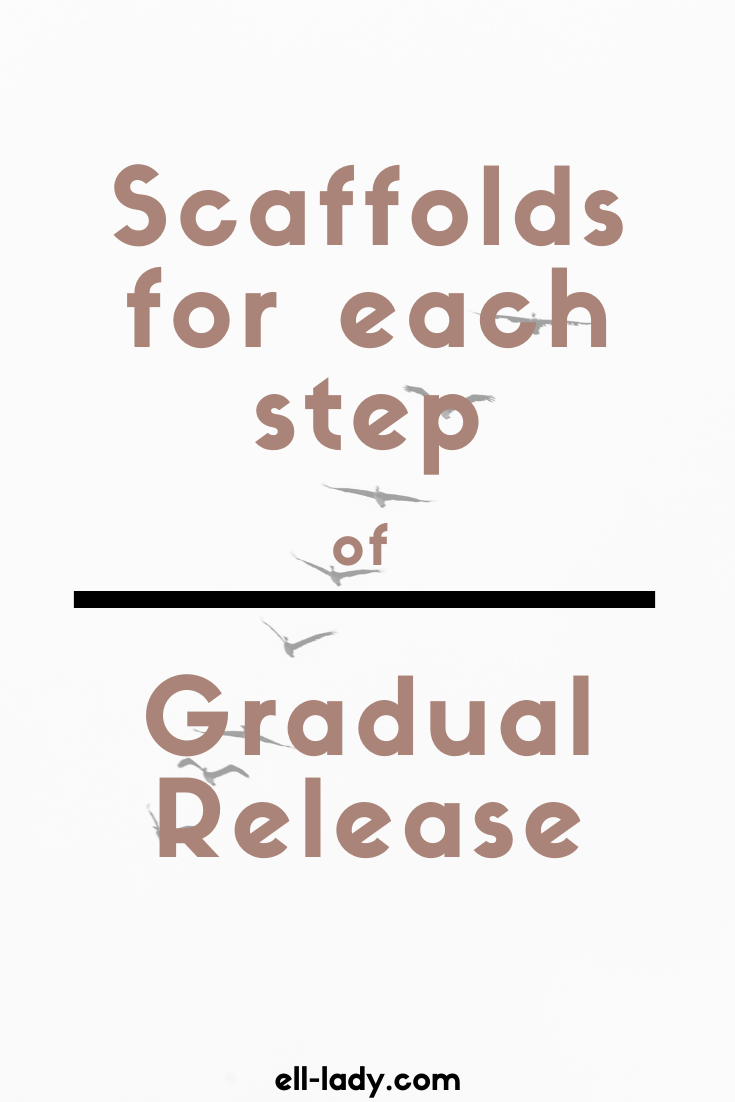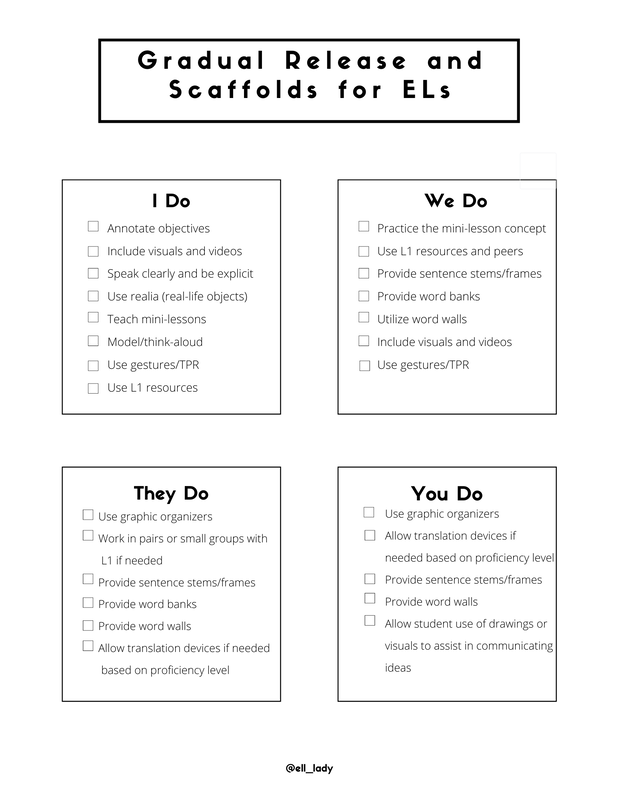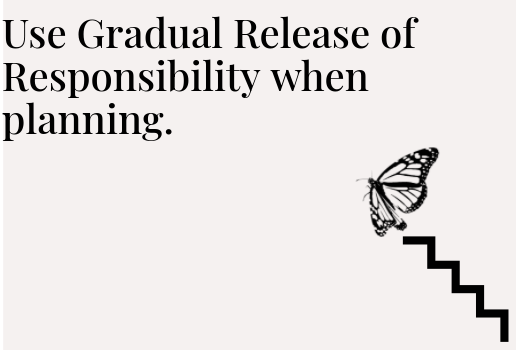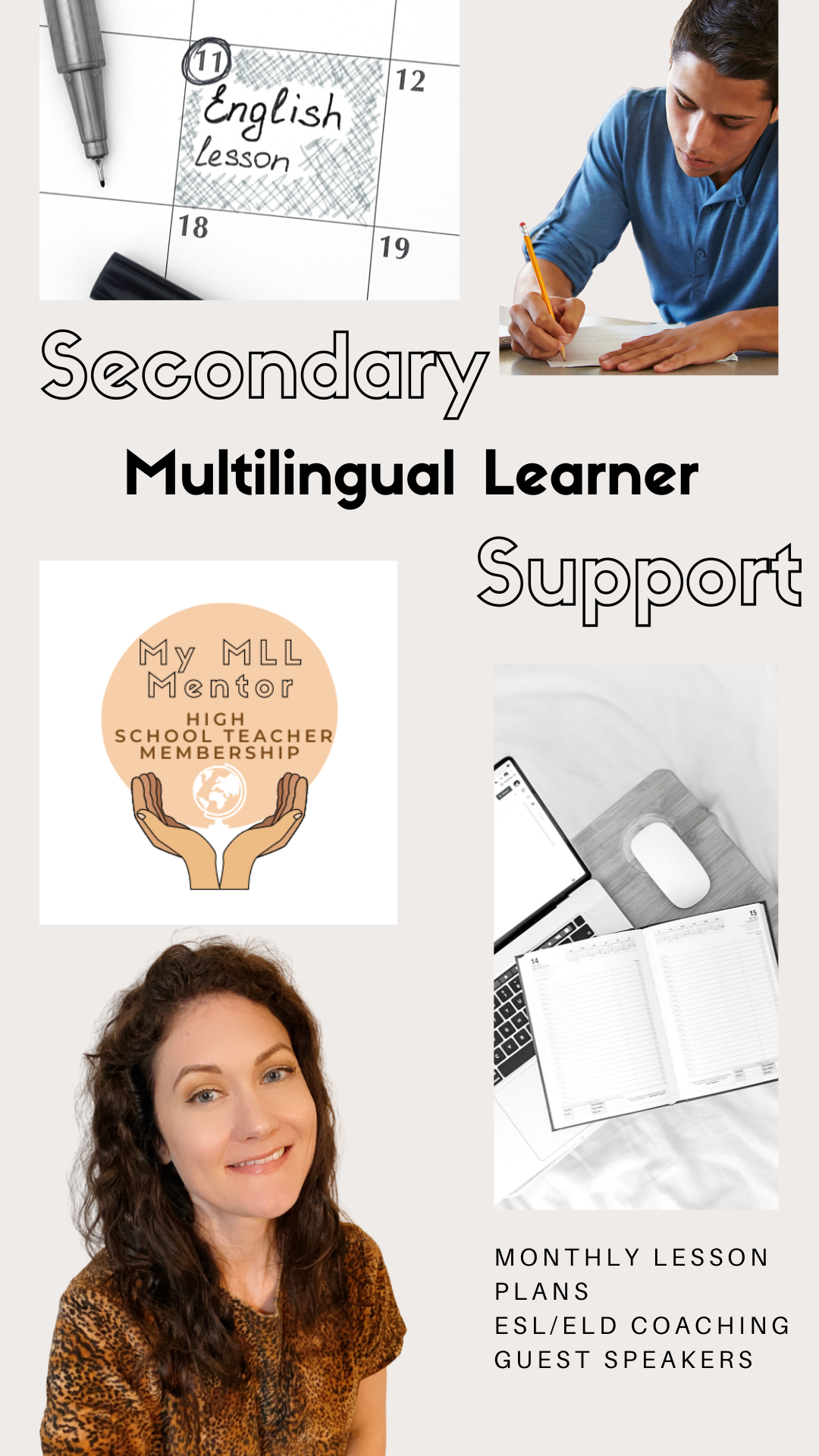|
It's no secret that I love the Gradual Release of Responsibility Model. In Douglas Fisher and Nancy Frey's article for ASCD.org, they state that the gradual release of responsibility instructional framework purposefully shifts the cognitive load from teacher-as-model, to joint responsibility of teacher and learner, to independent practice and application by the learner (Pearson & Gallagher, 1983). When I started implementing it, it just clicked for me and my students. It felt like I finally had a good way to lesson plan with scaffolds in mind. I felt like there was finally a step-by-step way to get my students to fly on their own. This structure allows us to give direct instruction for our Emergent Bilinguals while slowly pulling back our scaffolds, or by using different scaffolds for each step depending on their proficiency level until they ultimately do tasks on their own. It also allows specific time for students to interact and engage with each other. The visual below is not an exhaustive list of scaffolds and also includes the instructional strategy: the mini-lesson. The mini-lesson is a great strategy to implement into your "I do" and "we do" portion of your lesson. This is your chance to explicitly teach one strategy, concept, or skill before jumping into your task for the day. This is also a great way to monitor your teacher talk. Tan Huyhn also mentions in his article with Valentina Gonzalez about the workshop model that "since the mini-lesson is short, there is not a lot of teacher talk." Yep, it has many perks! In fact, the gradual release model as a whole is a great way to monitor it! It ensures we are allowing students time to talk and interact; this can be particularly challenging in the virtual space when it can be easier for students to disengage and for teachers to fill up silent space. In the chart below, think of scaffolds in the following ways: scaffolds that help me explicitly teach, scaffolds that help me and the students practice together, scaffolds that assist students in interacting, and ones that help them to work independently. For example, let's say we are reading a text with my newcomers and low intermediate students. I always, always use gestures, visuals, and L1 (first language) support especially when I am doing my "I do" and "we do". With newcomers, I will use these all throughout my lesson. Before reading, we may review some vocabulary that we will see while reading so I will introduce these with visuals, gestures, and L1 support. I'm also going to make sure that when I am explaining, I am speaking clearly and at the right speed (you have to find the sweet spot for your students!). To get them interacting and completing work alone for their "they do" and "you do", I supply sentence frames and/or stems with word banks for when they are in pairs or groups and discussing, and they usually have a graphic organizer or template to enter their ideas. If I have a brand-new student, I will also allow drawings instead of writing and I encourage drawings and any form of art I can to support the output of their ideas. This is for all proficiency levels. A great way to do this is with the many digital tools we have at our fingertips, and I happen to LOVE Canva for this purpose! They have a free education version that is amazing. For some other great ideas with tech for newcomers, this webinar by Saddleback Educational has some amazing tools to share- specifically some that allow students to sketch. In addition to language proficiency, how do you think about your scaffolds? Share your ideas with us in a comment below! To learn more about strategies for incorporating language into your lessons, check out my course, My EL Mentor: Creating a Language-Rich Classroom!
0 Comments
Leave a Reply. |
AuthorI support middle and high school teachers through monthly lesson plans, coaching, and guest speaker offerings in our Secondary ESL Teacher Membership. Archives
April 2023
Categories
All
|




 RSS Feed
RSS Feed
